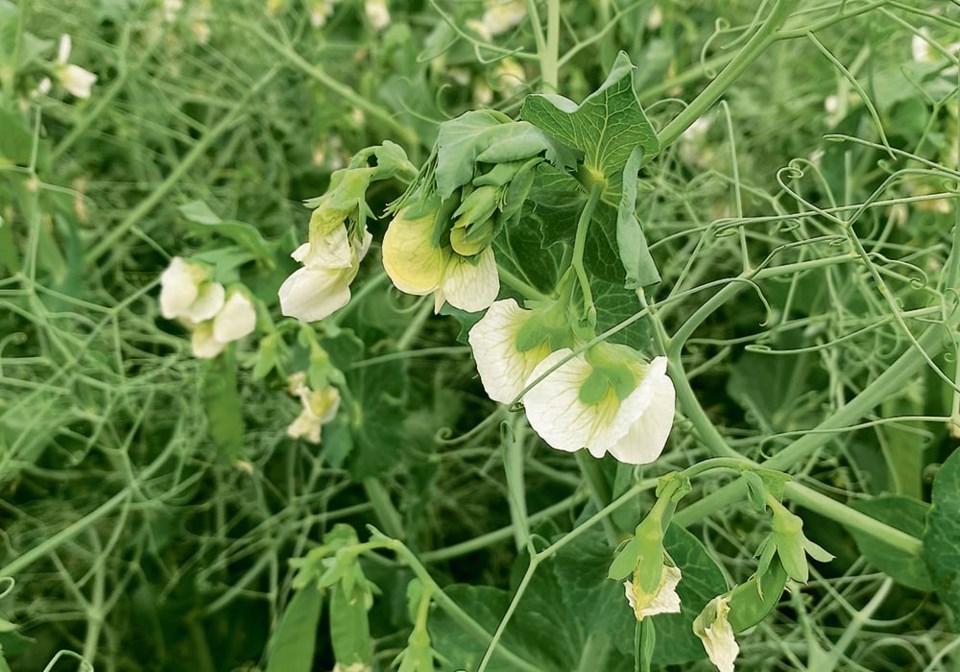WESTERN PRODUCER — Saskatchewan Pulse Growers’ new breeding partner is hell-bent on finding a solution to the aphanomyces problem that plagues the province’s pea and lentil crops.
“I can guarantee that it’s a key focus of ours to try and help solve this issue for Saskatchewan growers,” said Jason Reinheimer, head of cereals and pulse research with Limagrain. “We can move fast.”
In the latest episode of SPG’s Pulse of the Prairies podcast, Reinheimer said the French company is combining the best-known sources of resistance from North America and Europe to combat the devastating root rot disease.
It also intends to leverage the knowledge contained by SPG and other leading experts.
“I think we can work collectively to tackle this issue quite quickly,” he said.
Limagrain’s Saskatchewan pulse breeding program is already in full swing. The company hired a breeder who ran more than 10,000 field plots in eight locations across the Prairies during the summer of 2022.
“We were very happy that we were able to pull off a very successful season,” said Reinheimer.
Limagrain received support for the registration of 12 new lentil varieties and five new pea lines at the Prairie Grain Development Committee variety registration meetings in Banff this winter.
“We have a good cross-section across all major classes,” he said.
The late-stage germplasm was provided by SPG and vetted by Limagrain.
“In that material I see a lot of high-performing lines with the potential to deliver a lot more value to growers,” said Reinheimer.
It will be producing breeder seed of the promising new varieties.
The next step is to find partners to help Limagrain bring the lines to market and ensure they are entered into provincial trials to provide growers with the latest performance data.
“Hopefully, in the next two to three years we can be delivering new varieties and having farmers growing varieties through this commercialization path,” he said.
SPG executive director Carl Potts said the new varieties will be commercialized through seed companies like Canterra Seeds, SeCan and FP Genetics.
Royalties will be charged not only on certified seed, but also on farm-saved seed.
“We have low levels of certified seed use in pulses, so royalties on certified seed only won’t really be enough to attract and sustain new investment in pulse breeding,” he said.
“I know that is a departure from the past, but we think it’s a really important component to attracting and retaining investment in pulse breeding.”
However, existing varieties that were developed under the old breeding model in conjunction with the University of Saskatchewan’s Crop Development Centre will remain royalty-free.
“Growers will have the choice to continue to grow those varieties royalty-free or to switch to new varieties that have a royalty associated with them,” said Potts.
Limagrain spent the winter months analyzing the data from its 2022 summer field trials.
“We’re lucky enough to have some fairly sophisticated analysis tools that we use to understand the performance of our lines,” said Reinheimer.
The company works with bigger crops like corn that generate the kind of revenue that can pay for expensive analytics and breeding tools, such as rapid cycle breeding, genomic selection and marker-assisted selection.
It can apply that same technology to smaller crops like peas and lentils that wouldn’t typically warrant that type of investment on their own.
“We’re able to increase the rates of genetic gain much faster and deliver them faster to Saskatchewan growers,” he said.
Another key breeding objective for the company is to create herbicide tolerant lentils.
“Finding the right research and partnerships to be able to tackle this issue most efficiently is something that is high on our agenda and something we’ve been working very intensively on over the last little while,” said Reinheimer.
Limagrain is the first of what SPG anticipates will be “multiple” breeding partners under its new variety development program, including its old partner, the University of Saskatchewan’s Crop Development Centre.




